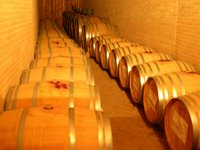 Last night Umbra students got into winemaking, literally! Umbra staff member and amateur winemaker Zach Nowak taught the first lesson in a three-part series on the ins and outs of wine. Nowak started with the theory of winemaking, discussing the chemistry and biology of fermentation, a look at various kinds of yeasts, and their life cycles.
Last night Umbra students got into winemaking, literally! Umbra staff member and amateur winemaker Zach Nowak taught the first lesson in a three-part series on the ins and outs of wine. Nowak started with the theory of winemaking, discussing the chemistry and biology of fermentation, a look at various kinds of yeasts, and their life cycles.
Finally, they discussed the steps in industrial wine production. The highlight of the night was, of course, the actual winemaking. Students Dustin Toy and Sarah Wobbecke removed their shoes, washed their feet, and got into a small tub up to their knees in grapes. The two stomped away for a half an hour, at which point the freshly pressed grape juice, or “must,” was siphoned off into  bottles. Each student received a small packet of yeast, an airlock, a cork, and instructions to turn the must into wine. The next meeting of the class will discuss clarifying the wine and decanting, while the last class will be the actual corking and labeling.
bottles. Each student received a small packet of yeast, an airlock, a cork, and instructions to turn the must into wine. The next meeting of the class will discuss clarifying the wine and decanting, while the last class will be the actual corking and labeling.
In photos: Sarah Wobbecke stomps on a bucket of grapes, with the help of Dana Trafton. Wobbecke and Dustin Toy spent half an hour up to their knees smashing grapes. At left, Caitlyn Pyden shows off a bundle of grapes before they were turned into must as Zach Nowak tries to teach the students about the winemaking process.







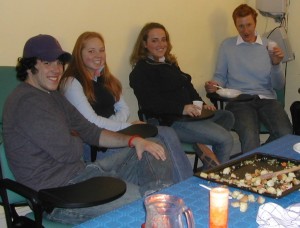
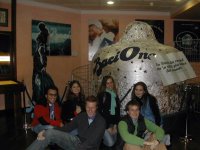

 remona (a sweet and spicy vegetable dish), a cheese torte, artichokes, and cheeses served with aged balsamic vinegar.
remona (a sweet and spicy vegetable dish), a cheese torte, artichokes, and cheeses served with aged balsamic vinegar. 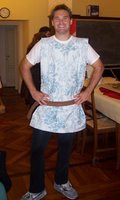
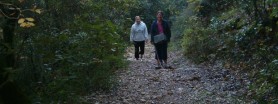



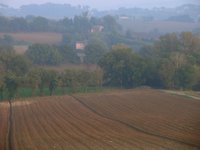
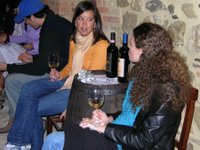 200s. The tower’s main purpose was protection against invading enemies in Medieval times. Today it’s part of the winery and is used as a tasting room and guest house. While at the cantina, students tasted five different wines from everyday table wines to extraordinary award-winning reds, reserved for more special occasions. (text by Regina Tingle, Coordinator of Student Services)
200s. The tower’s main purpose was protection against invading enemies in Medieval times. Today it’s part of the winery and is used as a tasting room and guest house. While at the cantina, students tasted five different wines from everyday table wines to extraordinary award-winning reds, reserved for more special occasions. (text by Regina Tingle, Coordinator of Student Services)